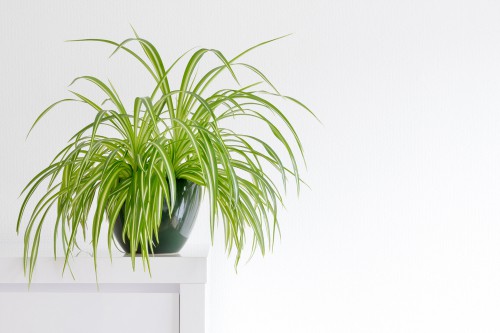Spider plants are popular houseplants known for their air-purifying abilities and ease of care. While they thrive indoors, many people wonder if they can be grown outside, particularly during the winter months. The answer is yes, spider plants can live outside in the winter, but there are some important considerations to keep in mind.
Understanding spider plants is essential to successfully growing them outdoors. These plants are native to tropical and subtropical regions and prefer warm temperatures, high humidity, and indirect sunlight.
When grown outside, they need to be protected from frost, strong winds, and direct sunlight. Additionally, spider plants require well-draining soil and regular watering to prevent root rot.
Indoor vs outdoor living for spider plants is a common topic of debate among gardeners. While spider plants can survive outside, they may not thrive in all climates.
Gardeners in warmer regions with mild winters can successfully grow spider plants outdoors year-round, while those in colder regions may need to bring their plants inside during the winter months. Proper winter care for spider plants is crucial to their survival, as exposure to cold temperatures and frost can damage or kill the plant.
Understanding Spider Plants
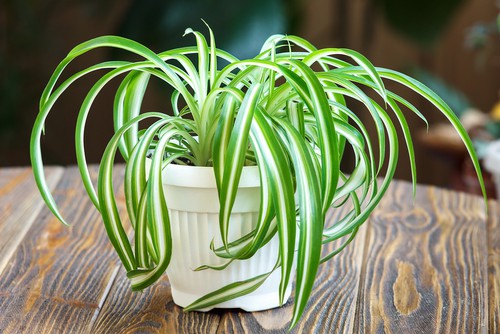
Spider plants, also known as Chlorophytum comosum, are native to Southern Africa and are a popular tropical plant. They are a perennial plant that is commonly grown indoors but can also be grown outdoors in the right conditions.
Spider plants are known for their long, slender leaves that grow in a rosette pattern. They can grow up to 2 feet long and have small white flowers that bloom in the summer. These plants are easy to care for and can tolerate a wide range of conditions, making them a popular choice for beginner gardeners.
Spider plants are a great addition to any garden or home due to their air-purifying qualities. They are known to remove harmful toxins such as formaldehyde and xylene from the air, making them an excellent choice for those who suffer from allergies or asthma.
When grown outdoors, spider plants require a warm and humid environment to thrive. They can tolerate partial shade but prefer bright, indirect sunlight. It’s important to keep the soil moist but not waterlogged, as too much moisture can lead to root rot.
Indoor vs Outdoor Living for Spider Plants
Spider plants are popular indoor plants that are known for their tolerance to low light and infrequent watering. However, can they survive outdoors in winter? Let’s take a closer look at the differences between indoor and outdoor living for spider plants.
Indoor Spider Plant Care
When kept indoors, spider plants prefer bright, indirect light and well-draining soil. They can tolerate a range of temperatures, but they prefer temperatures between 60-75°F (15-24°C). It is important to keep the soil moist but not waterlogged, as overwatering can lead to root rot.
Indoor spider plants can benefit from occasional fertilization during the growing season. A balanced, water-soluble fertilizer can be applied every 2-3 weeks to promote healthy growth. It is also important to periodically remove any dead or yellowing leaves to promote new growth.
Outdoor Spider Plant Care
If you want to keep your spider plant outdoors, it is important to choose a location that receives bright, indirect light. Spider plants can tolerate some direct sunlight, but too much can scorch their leaves. They also prefer well-draining soil and temperatures between 60-75°F (15-24°C).
During the growing season, outdoor spider plants can benefit from occasional fertilization with a balanced, water-soluble fertilizer. It is important to keep the soil consistently moist, but not waterlogged. Overwatering can lead to root rot, while underwatering can cause the leaves to wilt and turn brown.
In winter, spider plants should be brought indoors if temperatures drop below 50°F (10°C). They are tropical plants that are not adapted to cold temperatures and can suffer damage or die if left outside in freezing temperatures.
Winter Care for Spider Plants
Spider plants are a popular indoor plant that can also be grown outdoors in warmer climates. However, when the temperature drops, it’s important to take some steps to ensure that your spider plant survives the winter.
Temperature and Frost Tolerance
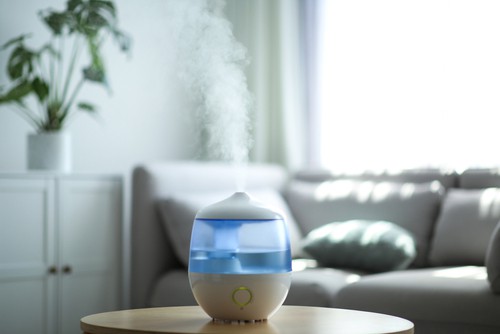
Spider plants are native to tropical and subtropical regions, so they prefer warmer temperatures. They can tolerate cooler temperatures, but they are not frost-tolerant. If the temperature drops below freezing, the plant will likely die.
To protect your spider plant from freezing temperatures, it’s important to bring it indoors before the first frost. If you live in a region with mild winters, you may be able to keep your spider plant outside with some winterizing techniques.
Preparing Spider Plants for Winter
Before the first frost, it’s important to prepare your spider plant for winter. Here are some steps you can take:
- Watering: During the winter, spider plants don’t need as much water as they do in the summer. Allow the soil to dry out between waterings to prevent root rot.
- Fertilizing: Spider plants don’t need as much fertilizer during the winter. You can reduce the frequency of fertilization to once a month or bi-monthly.
- Light: Spider plants need bright, indirect light to thrive. During the winter, the days are shorter, so you may need to move your plant to a brighter location or provide artificial light.
- Temperature: Spider plants prefer temperatures between 60-75°F (15-24°C). Keep your plant away from cold drafts and cooler temperatures.
By following these tips, you can help your spider plant survive the winter and thrive come spring.
Also see these other related posts:
- Can Snake Plants Grow in Artificial Light?
- Can Snake Plant Live in Water Only?
- Can Polka Dot Plant Grow in Water?
Light and Watering Needs
Spider plants require moderate to bright indirect sunlight to thrive. They can tolerate partial shade but do not do well in direct sunlight as it can scorch their leaves and dry out the soil. A bright spot with filtered sunlight or indirect bright sunlight is ideal for spider plants.
They need anywhere between six to eight hours of natural sunlight each day to grow healthy and strong. The stripes on the leaves are more prominent under bright, indirect sunlight.
When it comes to watering, spider plants prefer moist soil, but they are susceptible to root rot if overwatered. During winter, their growth slows, and they need less water. Too much water can cause root rot, while too little can cause stress and yellow leaves.
Unlike succulents and tender plants, spider plants require watering almost every two weeks or so. Once the spider plants have been established, they won’t need to be watered as often, but the soil should be kept moist during the first year for sure.
Spider plants are sensitive to the fluoride and chlorine in city water, so they perform best with rainwater or distilled water. They also don’t like too much fertilizer, so a basic 10-10-10 fertilizer should be used only once a month or bi-monthly.
During the fall and winter, spider plants need a little extra misting to increase humidity levels. They thrive in moderate humidity, and indoor air tends to be drier during winter, so it is crucial to supply sufficient moisture. This extra misting can help prevent spider plants from drying out and becoming stressed.
Soil and Fertilizer Requirements

Spider plants require well-draining soil that is slightly acidic with a pH level between 6.0 to 6.5. It is recommended to use a well-draining soil mix that includes compost to provide the necessary nutrients for the plant. When planting spider plants outdoors, it is important to ensure that the soil is well-draining to prevent waterlogging, which can lead to root rot.
During the winter season, spider plants are dormant and do not show any growth signs. Therefore, they do not require any fertilizer during this time.
However, during the growing season, spider plants need a balanced fertilizer that contains micronutrients such as iron, magnesium, and zinc. It is recommended to fertilize spider plants every two weeks during the growing season.
When fertilizing spider plants, it is important not to over-fertilize as this can lead to burning of the roots. It is recommended to dilute the fertilizer to half strength before applying it to the soil. Additionally, it is important to water the plant thoroughly before applying the fertilizer to prevent the roots from burning.
Common Pests and Diseases
Spider plants are generally hardy and resistant to pests and diseases. However, they can still be affected by certain issues that may arise when grown outside in winter.
Pests
Spider mites, aphids, whiteflies, and scales are some of the pests that can attack spider plants. These pests can cause damage to the leaves and stems of the plant, leading to discoloration, wilting, and even death.
To prevent and control these pests, it is recommended to regularly inspect the plant and remove any affected leaves or stems. Insecticidal soap or neem oil can be used to treat the plant and get rid of the pests. However, it is important to follow the instructions carefully and not overuse the products, as this can cause harm to the plant.
Fungal Infections
Fungal infections such as powdery mildew and root rot can also affect spider plants. Powdery mildew appears as a white powdery substance on the leaves, while root rot causes the roots to rot and turn brown.
To prevent fungal infections, it is important to avoid overwatering the plant and ensure good drainage. Improving air circulation can also help prevent powdery mildew. If the plant is affected by fungal infections, it is recommended to remove the affected parts and treat the plant with a copper spray or a fungicide.
Shock
Spider plants can also experience shock when moved from an indoor environment to an outdoor environment. This can cause the leaves to turn yellow or brown and fall off.
To prevent shock, it is recommended to gradually acclimate the plant to the outdoor environment by placing it in a shaded area for a few hours a day and gradually increasing the amount of time it spends outside. Additionally, protecting the plant from extreme temperatures and winds can also help prevent shock.
Signs of Stress in Spider Plants
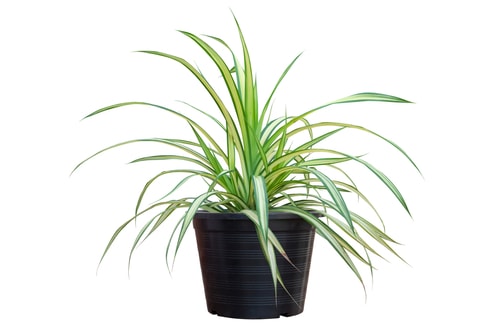
Spider plants are known for their hardiness and ability to tolerate a wide range of conditions. However, even these resilient plants can exhibit signs of stress when conditions are not ideal. In winter, spider plants that are kept outside may experience stress due to the cold temperatures and dry air.
One of the most common signs of stress in spider plants is brown leaves. When spider plants are exposed to cold temperatures or dry air, their leaves may turn brown and wilted. This is because the plant is not getting enough moisture to thrive.
To prevent this, it is important to mist the plant regularly and maintain a humid environment. A humidifier can be used to increase the humidity level around the plant.
Another sign of stress in spider plants is brown tips on the leaves. This is often caused by too much fertilizer or by allowing the plant to dry out too much between watering. To prevent this, it is important to water the plant regularly and to avoid over-fertilizing.
In addition to brown leaves and brown tips, spider plants may also exhibit other signs of stress such as wilting or drooping leaves. This is usually a sign that the plant is not getting enough water. To prevent this, it is important to water the plant regularly and to ensure that the soil is moist but not waterlogged.
Propagation of Spider Plants
Spider plants are easy to propagate and can be done through three methods: division, seeds, and spiderettes. The best time to propagate spider plants is during the spring and summer growing seasons, but it can be done throughout the year.
Division
Dividing spider plants is the most common propagation method. It involves separating the plant into smaller sections and repotting them. To do this, remove the plant from its pot and gently separate the roots into smaller sections.
Make sure each section has at least one healthy leaf and root system. Repot each section into a new container with fresh soil and water thoroughly.
Seeds
Growing spider plants from seeds is possible, but it is not the most common method. To do this, collect the seeds from the flower stalks once they have dried and turned brown. Sow the seeds in a seed tray with a well-draining soil mix and cover them lightly with soil. Keep the tray in a warm and humid place and water regularly. The seeds should germinate in two to three weeks.
Spiderettes
Spiderettes are the small plantlets that grow at the end of the spider plant’s long stems. They can be cut off and propagated to create new plants. To do this, cut the spiderette stem as close to the mother plant as possible.
Place the spiderette in a glass of water or in a pot of well-draining soil. If rooting in water, make sure to change the water every few days to prevent root rot. Once the spiderette has developed roots, repot it into a new container with fresh soil.
It is important to note that spider plants are susceptible to root rot, so it is essential to use well-draining soil and avoid overwatering. Additionally, spider plants cannot tolerate frost and are best kept indoors during the winter months.
Spider Plant Care Tips
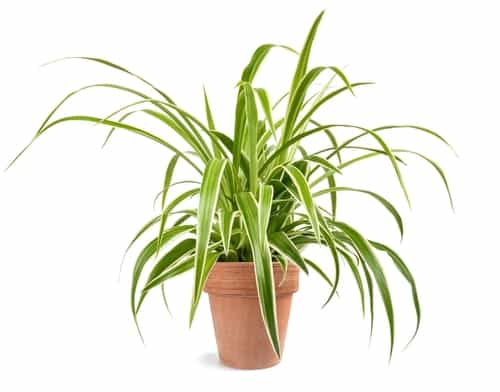
Spider plants are hardy houseplants that can survive outside in the winter with proper care. To ensure their survival, it’s important to prepare them for the colder temperatures and protect them from frost and wind. Here are some spider plant care tips to help keep them healthy during the winter months.
1. Acclimate the Plant
Before moving spider plants outside in the winter, it’s important to acclimate them to the cooler temperatures. Gradually expose them to the outdoor environment by placing them outside for a few hours each day for a week or two. This will help them adjust to the colder temperatures and prevent shock.
2. Protection from Frost and Wind
Spider plants are hardy, but they still need protection from frost and wind. Cover them with blankets or tarps on nights when the temperature drops below freezing. Also, consider placing them in a sheltered area, such as against a wall or under a porch, to protect them from wind.
3. Fertilize Sparingly
During the winter, spider plants don’t need as much fertilizer as they do during the growing season. Fertilize them sparingly, using a basic 10-10-10 fertilizer only once a month or bi-monthly.
4. Warm Temperatures
Spider plants prefer warm temperatures, so it’s important to keep them in a location that stays above freezing. If necessary, consider bringing them inside on particularly cold nights.
5. Border Plants
Spider plants can also be used as border plants in outdoor gardens. They prefer well-draining soil and partial shade. When planting them outside, make sure to space them at least 12 inches apart to allow for proper growth.
Frequently Asked Questions
Can spider plants survive outdoors during winter?
Spider plants can survive outdoors during winter as long as they are protected from freezing temperatures. They can tolerate temperatures as low as 35°F, but anything below that can damage or kill the plant.
How can I protect my spider plants during winter?
To protect your spider plants during winter, you can cover them with a frost cloth or move them indoors if the temperature drops below 35°F. You can also mulch around the base of the plant to help insulate the roots.
What is the lowest temperature spider plants can tolerate outside?
Spider plants can tolerate temperatures as low as 35°F, but anything below that can damage or kill the plant. It is important to protect the plant from freezing temperatures during winter.
Are spider plants suitable for outdoor hanging baskets?
Spider plants are suitable for outdoor hanging baskets as long as they are protected from freezing temperatures. They prefer bright, indirect sunlight and well-draining soil.
Can spider plants be grown outside in full sun?
Spider plants can be grown outside in full sun, but they prefer bright, indirect sunlight. Too much direct sunlight can scorch the leaves and cause them to turn yellow.
How do I care for spider plants when grown outside?
When grown outside, spider plants require regular watering and well-draining soil. They prefer moderate humidity and temperatures between 70°F and 90°F. Fertilize the plant once a month during the growing season with a balanced fertilizer.

Hey, I’m Lisa and I’ve been an avid gardener for over 30 years. I love writing, talking and living in the garden! Feel free to connect with me on my socials below

